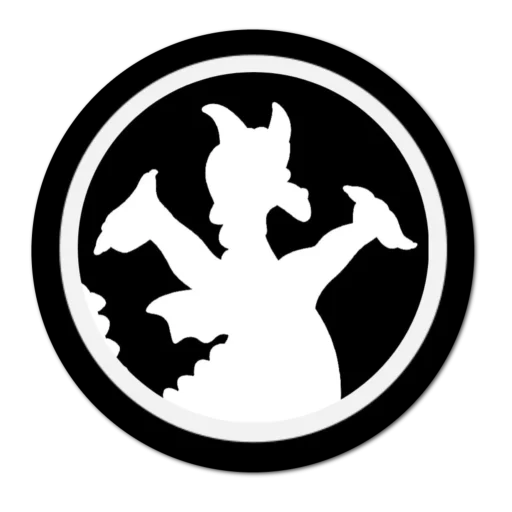Have you ever been to a World’s Fair? The sights, the sounds, the size, and the crowds. In the days before the internet, social media, and even television, World’s Fair expositions were critical ways for businesses, organizations, and cultural administrations to share their ideas and creations with the world. A once-every-five-year event, the World’s Fair had the magnitude of the modern day Olympics, and has always been a chance to make a big splash on the world stage.

With the huge popularity of Disneyland, and a successful world presentation at the 1960 Olympics in Squaw Valley, California, several sponsors for the 1964 World’s Fair, to be held in New York, came knocking on Walt Disney’s door. They wanted flair, creativity, and popularity – and Walt could provide all three.
Walt Disney and his team created four unforgettable attractions for the 1964 World’s Fair, including:
- it’s a small world (created for Pepsi Cola)
- Carousel of Progress (created for General Electric)
- Great Moments With Mr. Lincoln (created for the State of Illinois)
- Magic Skyway (created for Ford Motor Company)
As most Disney fans know, three of these attractions went home to Disneyland after the close of the Fair in 1965. But one attraction – Ford’s Magic Skyway – never made it out of New York in one piece. Was this attraction less a success than the other three? Was it a flop? Let’s explore Ford’s Magic Skyway, and find out what happened to this attraction after the close of the fair.
Highway In the Sky
Ford’s Magic Skyway was the largest Disney-designed attraction at the Fair at 273,000 square feet (over six acres), and was the only attraction hosted by Walt Disney. The ride track ran for a half mile, and entertained visitors while also introducing them to a host of Ford automobiles, which were used as the attraction’s ride vehicles.
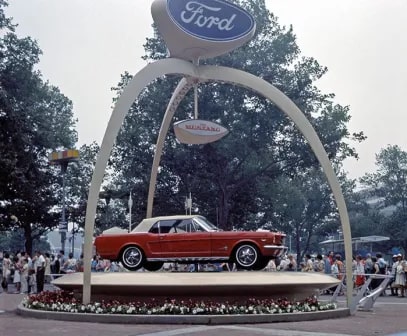
The most popular ride vehicles were the brand new Mustangs – first released by Ford in 1964 in conjunction with their appearance at the World’s Fair. All cars were affixed to a ride track which took guests on a journey through time.
The ride began with the cars slowly gliding along through a glass tunnel outside the Ford pavilion’s rotunda building. This idea was conceived by Disney Legend John Hench, to give riders a perfect view of the fairgrounds from the upper level of the Ford pavilion, while also giving fairgoers a glimpse of the new Ford models from below.

Once inside, most of the attraction was spent in prehistoric times, beginning with the age of the dinosaurs. Guests were introduced to our oversized predecessors in a peaceful setting, as they could watch brontosaurus’ graze vegetation and triceratops growing their family.

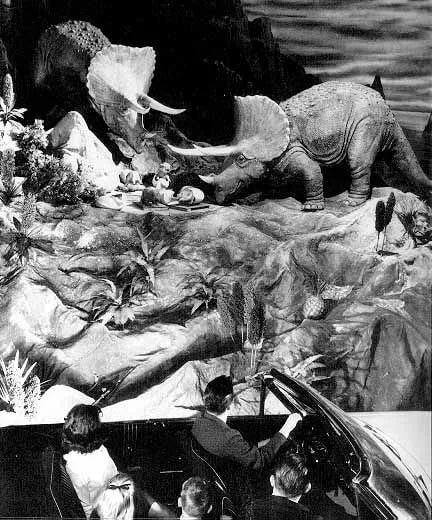
Tensions mounted in the next scene, when guests witnessed a classic battle of life and death between a stegosaurus and a hungry tyrannosaurus rex.

Onto the age of humans, guests could watch the early caveman ancestors living through pivotal moments of invention, including the creation of fire and the wheel (which is, of course, where Ford comes in).
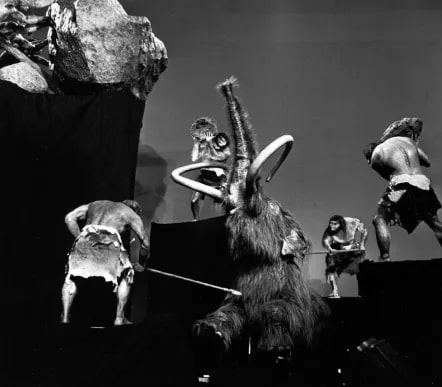
Following the invention of the wheel, guests continue their journey along the “Highway in the Sky” to “Space City,” which was a futuristic town strategically full of Ford creations. Walt Disney himself – via voiceover – invites guests to “step out and see a world where tomorrow is being created today” by exploring the various Ford engineering concepts and products located throughout the pavilion’s indoor showroom.
A Broken Relationship
Walt Disney expected Ford to have plans for the Magic Skyway after the Fair, whether it was as a sponsored pavilion at Disneyland, or at Ford headquarters in Dearborn, Michigan.
But philosophical differences between Walt Disney and Henry Ford II led to a strained relationship. Ford’s goal of keeping the pavilion’s success tied to a budget contrasted directly with Walt’s creative personality, which often led to higher costs in order to produce the best experience possible for guests.
Bob Gurr, a Disney Legend and one of the attraction’s key designers, blamed the ride’s frequent vehicle collisions on Ford’s budget cuts. Ford himself told an entire crowd on opening day – with Walt standing next to him – that the project had gone over budget.
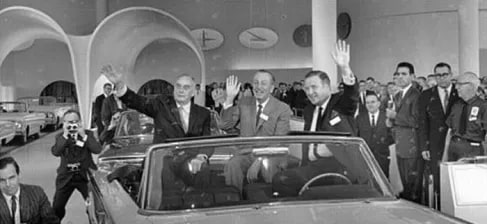
The bruise to the relationship that bothered Walt the most was Ford’s resistance to licensing the use of Walt’s name in the attraction. Walt put so much of himself into every project he undertook, that he took Ford’s refusal personally. According to Disney Legend Marty Sklar, Ford seemed to downplay Disney’s potential usefulness to the Ford Motor Company after the Fair. Ford declined the offer to provide further sponsorship of the pavilion and its concepts, and the relationship between the companies ended shortly after the completion of the Fair.
This was most unfortunate, because the legendary Sherman Brothers wrote a catchy song for Ford, which never made it into the attraction:
The Magic Skyway Lives On
While the attraction never made it out of the World’s Fair in one cohesive piece, Disney did put some of the attraction elements, as well as the engineering concepts, to good use. Let’s explore where the legacy of the Magic Skyway lives on.
Primeval World
The most visually memorable pieces of the Magic Skyway were the prehistoric dinosaur scenes. All three of these scenes – the brontosaurus family feeding, the triceratops family nesting, and the stegosaurus/tyrannosaurus rex battle – are prominently displayed as the Primeval World diorama, which guests can see riding the Disneyland Railroad between Tomorrowland and Main Street U.S.A.

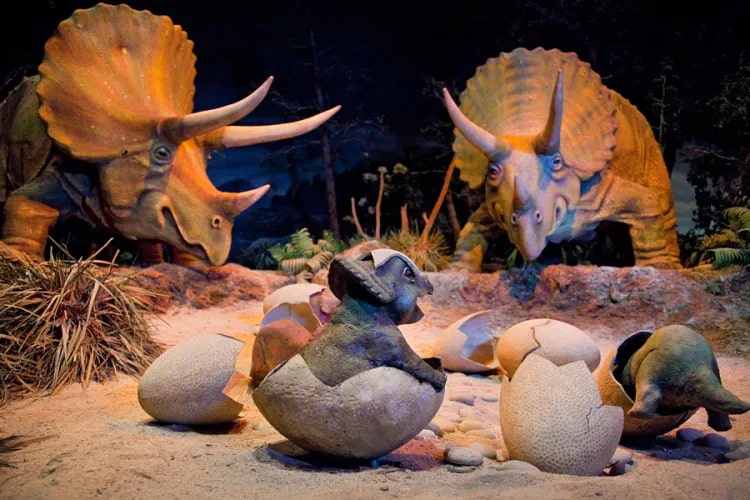
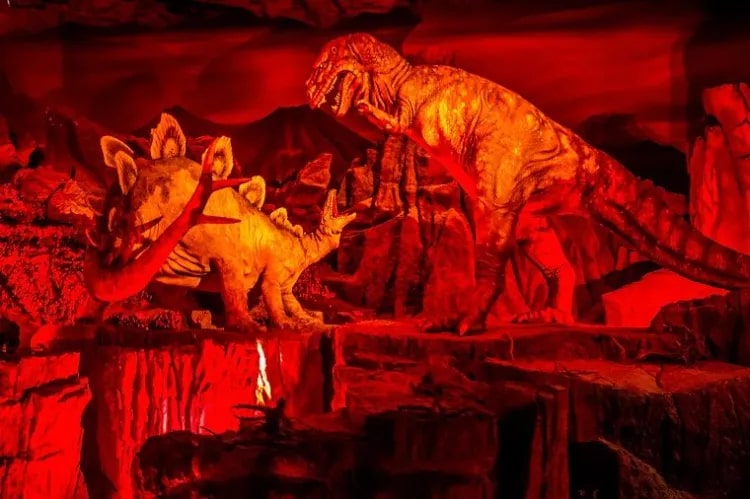
Primeval World may be the only place where guests can see the actual audio animatronic dinosaurs from the Skyway, but the dinos used in the Skyway also inspired a similar scene from the former Universe of Energy attraction at Epcot. The brontosaurus and stegosaurus/tyrannosaurus rex fight scenes in Universe of Energy were incredibly similar to the tried and tested dioramas from the Magic Skyway, albeit more technologically advanced. This further demonstrates the timeless nature of many of Walt’s entertaining ideas. Don’t mess with success!
Ride Track System
The track system concept used by Bob Gurr to transport the Ford automobiles along the Skyway was used to create the WEDWay PeopleMover ride at Disneyland just a couple years after the World’s Fair ended (and at Walt Disney World many years later). Walt offered Ford a chance to sponsor the Disneyland attraction, but Ford declined, reportedly being reluctant to support technology that appeared to replace the automobile. Goodyear was happy to sponsor the PeopleMover, and was able to showcase the use of their tires as a key component to the ride track system.
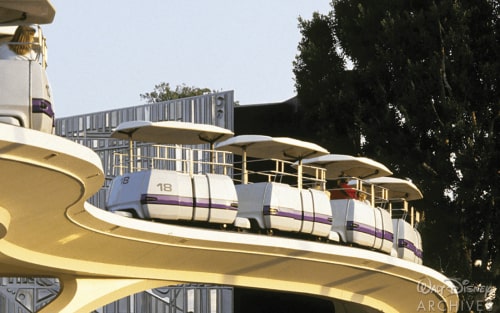
One huge lesson Gurr and his team learned from the Skyway was to fasten the ride vehicles in place along the track chain, so all vehicles would move along the track at evenly spaced intervals, avoiding the potential for collisions.
While the ride system is not an obvious nod to Ford’s Magic Skyway, the engineering concepts developed during the creation of the Skyway have proven to be among Disney’s most valuable technological advances born at the World’s Fair. Disney’s famous Omnimover ride system – a term coined by Gurr – is a direct descendant of the engineering advances made during the creation of the Skyway. Haunted Mansion, Spaceship Earth, Horizons, Journey of the Little Mermaid, and many other classic Disney Parks attractions can thank Gurr and his team from the 1964 World’s Fair for providing their smooth, seamless ride experiences.
The Cavemen and the Mammoth
Aside from the Omnimover ride system, Epcot’s Spaceship Earth can thank the 1964 World’s Fair for inspiration in the early caveman scenes. The scene depicting the challenge of men hunting in unison for larger prey is directly inspired by a similar scene in the Skyway, though the Epcot version is far more technologically advanced than the “primitive” version used in the World’s Fair.
Want another cute little nugget from this Skyway scene? The mammoth which fell under attack by the cavemen actually survived the encounter! He was used twice following the World’s Fair.
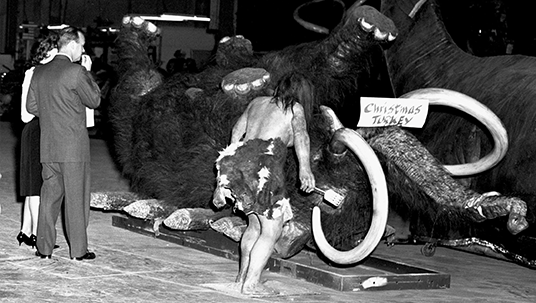

The first time, he appeared shortly after the Fair as a “Christmas Turkey” at a Disney Christmas party. He later showed up, minus his fur, in Disneyland’s Jungle Cruise, squirting with the other elephants at the back of the bathing pool. Guests can still see him there today.
This Feels Familiar
In a nutshell, Ford’s Magic Skyway took guests on a tour through time, from the vantage point of a unique ride vehicle, delivering entertained guests to a showroom where they could explore more concepts and products that interested them. This overall model was very closely followed in several of Epcot’s initial Future World attractions, in particular World of Motion, which explored the history and future of transportation.
With the transportation pavilion being part of the earliest plans for Future World in the 1970s, one of Ford’s key rivals in the automobile industry – General Motors – signed on early as a sponsor for the pavilion. General Motors had been impressed with the Magic Skyway attraction from the World’s Fair ten years earlier, and they wanted to beat Ford to the punch for a key sponsorship in Disney’s new futuristic park.
Early plans for World of Motion called for two attractions: one on the history of transportation using Omnimover technology perfected since the World’s Fair, and a second outdoor car testing attraction.

The Omnimover attraction was built into a dark ride, which opened with the park in 1982, and largely resembled the time travel concept of the Magic Skyway. The outdoor attraction was not initially included in the pavilion, but it eventually came to life as Test Track, which replaced the original World of Motion Attraction in 1999.
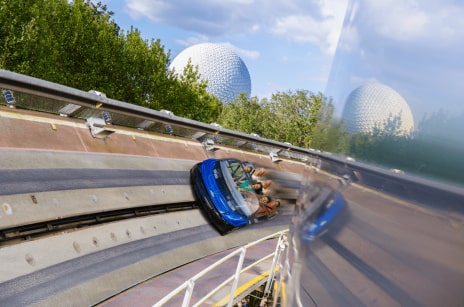
On this combination indoor dark ride with an outdoor thrill piece, guests test ride a vehicle of their own design through a series of indoor proving ground obstacles, then take the car out on a piece of open track outside to max out their speed at close to 60 miles per hour. Hold onto your hat!
What About Ford?
When the Fair was over, the Pavilion was torn down, but Disney used many of the pieces and ideas, as described above. You might be wondering if the Ford company retained anything from the attraction or pavilion? In fact, Ford did keep one artifact from the fair: a novelty band of musical audio animatronic car parts that had welcomed visitors to the pavilion as the “Auto Parts Harmonic Orchestra.”

This set was designed by another Disney Legend Rolly Crump, who also designed the Tower of the Four Winds for Pepsi’s Small World pavilion.
The ride vehicle cars were shipped to a Ford employee resale lot, where they received a second breath of life. Magic Skyway vehicles, especially the Mustangs remain highly sought after collectibles today.
The Road Goes On
You may have heard the expression “no good idea ever truly dies at Disney.” The same can be said for attractions that have gone extinct. Ford’s Magic Skyway may not have been recreated in exact form following the 1964 World’s Fair, but Disney made good use of the pieces, ideas, and efforts that went into the creation of this memorable piece of World’s Fair history. You just need to know where to look.
If you would like to get a feel for the Magic Skyway experience, check out this video:
Please remember to grab your personal belongings as you exit your Ford automobile vehicle. I hope you enjoyed this piece of World’s Fair attraction history. If you liked this article, please feel free to share it using one of the buttons below (or you can always be “classic” by copying/pasting the URL for this post).
Join the conversation on social at: Instagram Facebook X
I found inspiration for researching and writing this post while listening to an episode of Imagination Skyway (formerly Imagineer Podcast) Episode 88 from October 17, 2020. The episode briefly touches on this attraction, en route to a full discussion on the Carousel of Progress. Another episode from November 28, 2020 includes a roundtable discussion, where podcaster Matt Krul invites several members of his family to discuss their first hand experiences at the 1964 World’s Fair. Both episodes are excellent, and will put a Disney history smile on your face.
